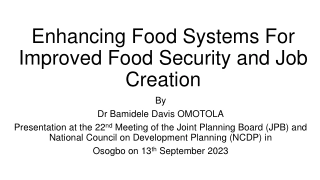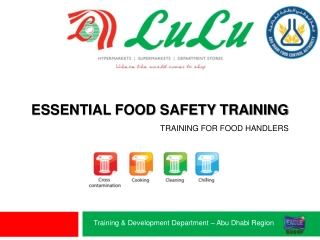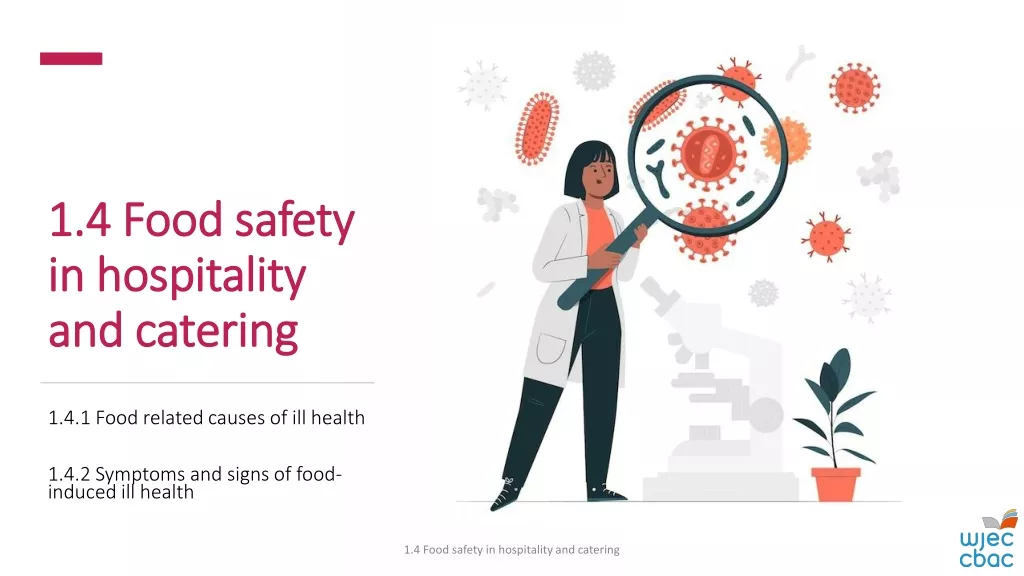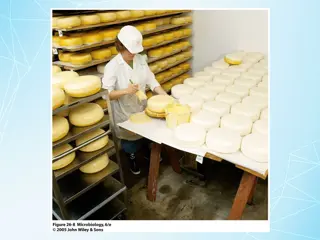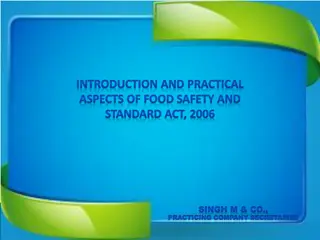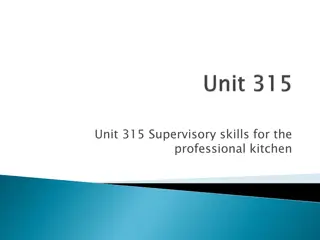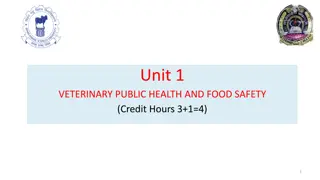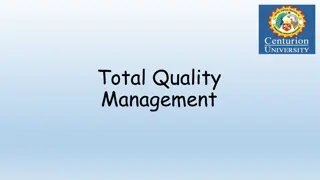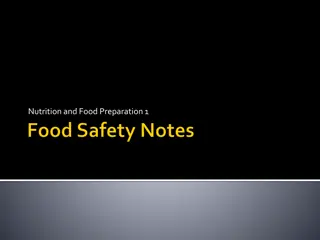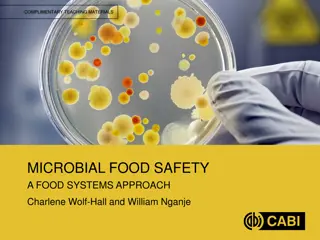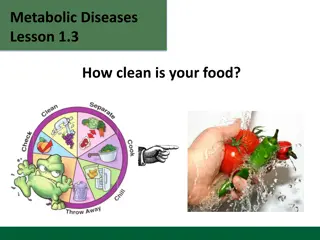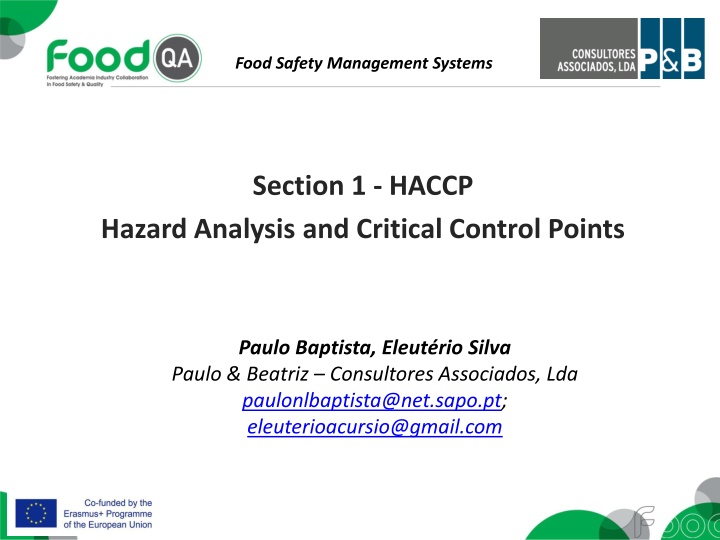
HACCP: Hazard Analysis and Critical Control Points
Dive into the key concepts of Hazard Analysis and Critical Control Points (HACCP) with this detailed guide. Learn about the principles, methodology, and implementation steps of HACCP systems in food safety management. Explore real-world case studies to assess food safety risks and enhance your knowledge in this critical area.
Download Presentation

Please find below an Image/Link to download the presentation.
The content on the website is provided AS IS for your information and personal use only. It may not be sold, licensed, or shared on other websites without obtaining consent from the author. If you encounter any issues during the download, it is possible that the publisher has removed the file from their server.
You are allowed to download the files provided on this website for personal or commercial use, subject to the condition that they are used lawfully. All files are the property of their respective owners.
The content on the website is provided AS IS for your information and personal use only. It may not be sold, licensed, or shared on other websites without obtaining consent from the author.
E N D
Presentation Transcript
Food Safety Management Systems Section 1 - HACCP Hazard Analysis and Critical Control Points Paulo Baptista, Eleut rio Silva Paulo & Beatriz Consultores Associados, Lda paulonlbaptista@net.sapo.pt; eleuterioacursio@gmail.com
Outline 1. Introduction 2. The concept of HACCP 3. The principles of HACCP 4. The HACCP methodology
Learning outcomes The trainee/student will: - Be able to understand the concept and principles of the HACCP System. - Be able to understand the methodology of implementation of a HACCP System, describing in detail the steps inherent in this process. - Be able to be involved in the implementation of HACCP methodology in companies, in particular in the steps related to hazard analysis, the determination of critical control points, the establishment of critical limits and the establishment of the monitoring system.
REVIEW EXERCISES / CASE STUDIES 4
Review exercises / case studies Exercise / case study no. 1 In which of the following cases would you consider that the situation could represent a significant food safety risk to the consumer? In a company where minced meat (e.g. meat for hamburger) is deep frozen, it takes 24 hours to get to -18 C in the core of the product. In a company producing fresh cheese made of raw milk, tests on Listeria monocytogenes as microbiological criteria are not carried out. At the end of the year, confectionery products, ready to dispatch, are stored in a warehouse with the temperature varying between 15 and 20 C. In a company producing ready cooked meals, products with shelf lives expired are not identified as non-conform in the warehouse. The company produces sauces and dressings such as mayonnaises, salad dressings based on pasteurized liquid eggs. The last year the company did not test the recall procedure internally. 5
Review exercises / case studies Exercise / case study no. 2 A meat processing factory includes the following processes: the slaughter of calves, deboning, cutting, packaging, storage and transport of veal and slaughter by-products. The company has set up an HACCP system based on the principles of the Codex Alimentarius. One CP has been identified: temperature control and one CCP foreign body contamination during the process checked by metal detection. Also a number of other preventive control measures and defined, such as cleaning and disinfection, preventive maintenance, quality of drinking water, personal hygiene, and leaky vacuum packs etc. 6
Review exercises / case studies Exercise / case study no. 2 Last year a new product (minced veal) was introduced. A HACCP analysis for this product has been carried out, but records are lacking concerning the implementation. The metal detector introduced on this line was newly installed. The installation and first calibration was carried out by the supplier and respective documents and records are available. But no records for further surveillance are available for this metal detector since then. There are 4 other detectors on other lines, where documents and records comply with the requirements. 7
Review exercises / case studies Exercise / case study no. 2 Which of the following statement(s)/judgement(s) is/are correct? The company lacks the established monitoring procedures for CCP metal detection for one out of five metal detectors. This is not a critical non-conformity in terms of food safety. The company lacks the established monitoring procedure for one CCP metal detection. This is a critical non-conformity in terms of food safety. It is not necessary to have regular check of the proper functioning of the metal detector. Metal detector was not necessary on the new line as the new product was minced veal. 8
Review exercises / case studies Exercise / case study no. 3 In a cheese production factory, the milk pasteurization has been identified as CCP. The pasteurizer is equipped with a divert valve but it is not in use. The justification is that as the company records the milk temperature at the beginning of the day when the milk arrives in the vat as it comes directly from the pasteurizer and the temperature measuring device is calibrated once a year. This is a proper justification or not (divert valve should functioning all time)? Justify. 9
Review exercises / case studies Exercise / case study no. 4 In a cakes production site, the baking time and temperature have been identified as CCPs. Specific monitoring procedure is in place. A month ago, the baking temperature target and tolerances have been updated, the control records have been changed and responsible employees have been informed. The written procedure has not been updated. Validation records of the update of baking temperature were not available. This is could be critical in terms of food safety or not? Justify. 10
References AFNOR, Norme exp rimentale XP V 01-003 Lignes Directrices pour l Elaboration d un Protocole de Validation de la Dur e de Vie Microbiologique, AFNOR Association Fran aise de Normalisation, Paris, France, 1998. Baptista, P. e Noronha, J., Seguran a Alimentar em Estabelecimentos Agro-Alimentares: Projecto e Constru o, Forvis o Consultoria em Forma o Integrada, Guimar es, Portugal, 2003. Baptista, P. e Saraiva, J., Higiene Pessoal na Ind stria Alimentar, Forvis o Consultoria em Forma o Integrada, Guimar es, Portugal, 2003.
References Baptista, P. e Ven ncio, A., Os Perigos para a Seguran a Alimentar no Processamento de Alimentos, Forvis o Consultoria em Forma o Integrada, Guimar es, Portugal, 2003. Baptista, P., Higiene e Desinfec o de Equipamentos e Instala es na Ind stria Agro-Alimentar, Forvis o Consultoria em Forma o Integrada, Guimar es, Portugal, 2003. CAC, CAC/GL 021-1997 Principles for the Establishment and Application of Microbiological Criteria for Foods, CAC - Comiss o do Codex Alimentarius, 1997.
References CAC, CAC/GL 030-1999 Principles and Guidelines for the Conduct of Microbiological Risk Assessment, CAC - Comiss o do Codex Alimentarius, 1999b. CAC, CAC/RCP 1-1969, Rev.3, Amd. 1 - General Principles of Food Hygiene, CAC - Codex Alimentarius Commission, 1999a. Gilbert, R.J., Louvois, J., Donovan, T., Little, C., Nye, K., Ribeiro, C.D., Richards, J., Roberts, D., Bolton, F.J., 2000, Guidelines for the microbiological quality of some ready-to-eat foods sampled at the point of sale, PHLS Advisory Committee for Food and Dairy Products, Communicable Disease and Public Health, 3 (3): 163-7.

